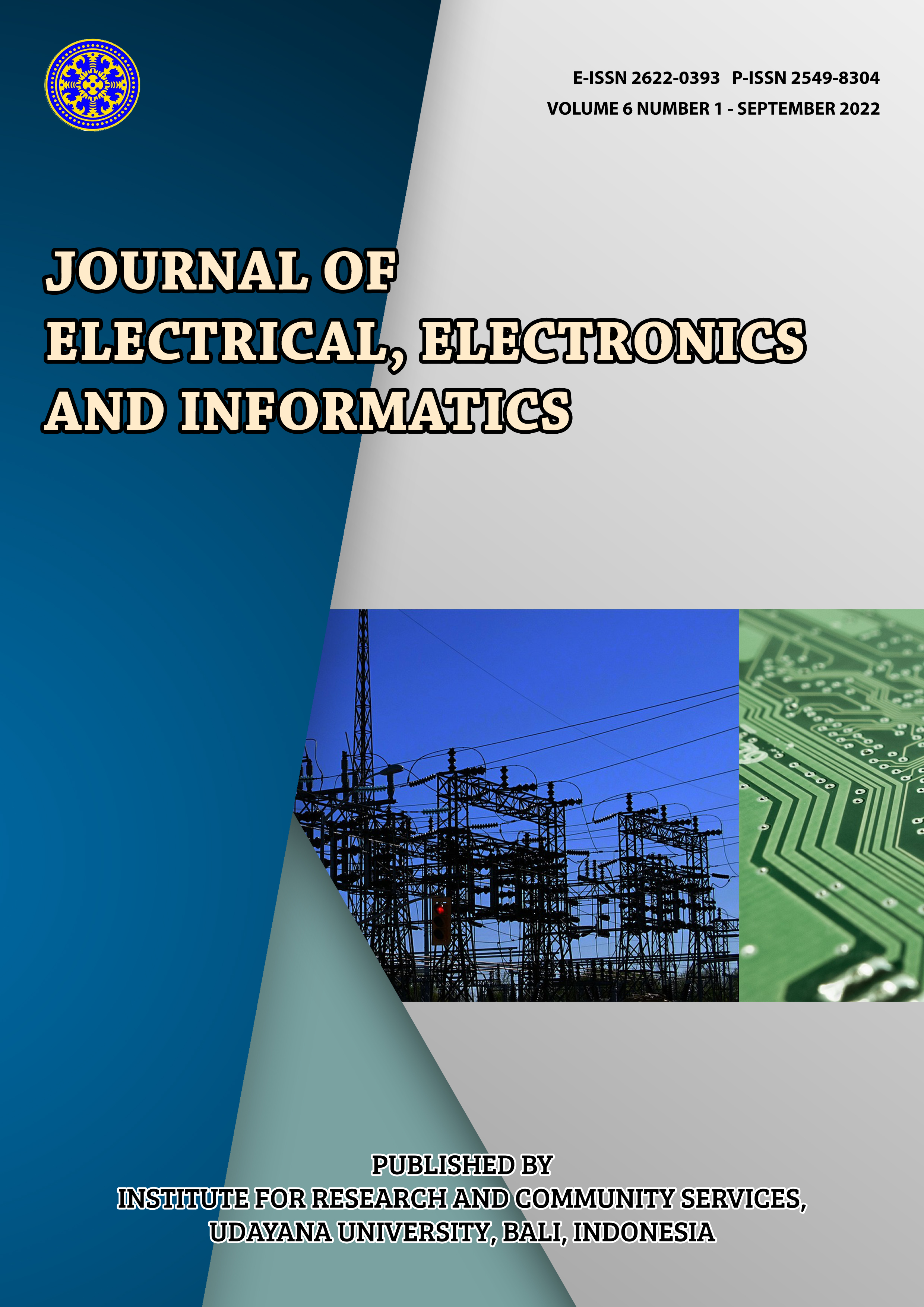Modelling Fuzzy Logic Type-2 for Liquid Waste Control of Aerator Machine
Abstract
Liquid waste cannot be disposed of directly, so it must be processed so as not to cause pollution to the surrounding environment. Both BOD (Biological Oxygen Demand) and COD (Chemical Oxygen Demand) treatment, oxygen is also required so that the quality of the liquid waste is safe for the environment. Liquid waste treatment mostly utilizes aerators to produce high pressure air in liquid waste containing oxygen (O2). The problem that occurs in most wastewater treatment is the determination of the working time of the aerator, resulting in excessive use of electrical energy, but the results of the waste are still within unsafe limits. In general, the operating time of the aerator is manually, this causes the use of electrical energy to be wasteful. This research was conducted, how to develop a control system design for aerator operating time on the quality of liquid waste. The development of the control system used is Sugeno interval fuzzy logic type-2 with 2 (two) input types of Gauss membership function. The advantage of interval fuzzy logic type-2 over type-1 fuzzy logic is the ability to provide more accurate output for higher input uncertainty. The input variables used are waste volume and COD reduction, while the output is the aerator's operating time. The results obtained in the system design can be applied properly and in accordance with the setting point with an average aerator operating time of 6.8 hours and can reduce the use of electrical energy by 38.2%.
Downloads
References
[2] Filali, A. Fayolle, Y. Peu P.. Philippe L, Nauleau F., et al.2014. Aeration control in a full-scale activated sludge wastewater treatment plant: impact onperformances, energy consumption and N2O emission. ICA2013 [00941253]
[3] Amand, L. Olsson, G. dan Carlsson,B. 2013. Aeration control – a review. Water Science & Technology , 67.11
[4] Nurroisah, E. Indarjo,S. Wahyuningsih,A.S. 2014. Keefektifan Aerasi Sistem Tray dan Filtrasi sebagai Penurunan Chemical Oxygen Demand an Padatan Tersuspensi pada limbah cair. Unnes Journal of Public Health.
[5] Wagini,R. Karyono. Budi, A.S. 2002. Pengolahan Limbah Cair Industri Susu. Manusia dan Lingkungan vol 9 hal 23-31.
[6] Tirtowiyadi,B.H. 2014. Aplikasi Kontrol Proportional Plus Integral Pada Pengaturan Kadar Oksigen (Dissolved Oxygen) Akuarium. Tugas Akhir Jurusan Teknik Elektro Fakultas Teknik Universitas Diponegoro
[7] Doaa M. Atia1, Faten H. Fahmy1, Ninet M. Ahmed1, dan Hassen T. Dorrah2. 2012. Design and Control Strategy of Diffused Air Aeration System. The Online Journal on Power and Energy Engineering OJPEE
[8] KAYA, A. 2006. Fuzzy design of wastewater treatment plants. Graduate Scool of Natural and Aplied Science
[9] Harrington, L. Kaemmerling,C. and Leininger, J.2014. On/Off Aeration Control of an Activated Sludge Digestion System. ENV-4970 Environmental Field.
[10] Timoty J. Ross. 1995. Fuzzy Logic With Engineering Applications. McGraw-Hill, Inc.

This work is licensed under a Creative Commons Attribution-ShareAlike 4.0 International License.











